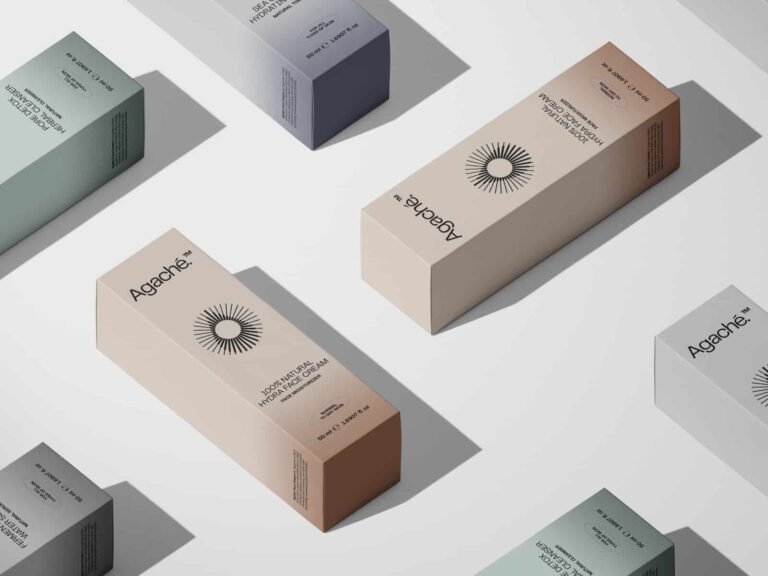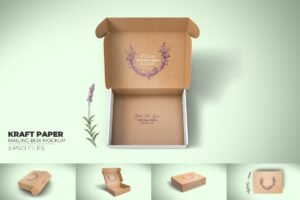Understanding Paper Weights
Before delving into the specific types of paper grades, it’s essential to have a basic understanding of paper weights. Paper weight is typically measured in grams per square meter (gsm) and significantly influences the performance and application of the paper in packaging. A higher gsm indicates a thicker and more durable paper, while a lower gsm implies a thinner and more lightweight option. The choice of paper weight depends on factors such as the nature of the packaged product, the level of protection required, and the aesthetic appeal desired.

Type 1: Kraft Paper

A. Characteristics and properties
Kraft paper is known for its strength and durability. It is made from unbleached pulp and has a natural brown color. The fibers in kraft paper are long and provide excellent tensile strength, making it resistant to tearing and puncturing.
B. Common uses in packaging
Kraft paper is commonly used for packaging heavy-duty items such as industrial products, construction materials, and agricultural produce. It is also used for making envelopes and shopping bags due to its robustness.
C. Advantages and disadvantages
The main advantages of kraft paper include its high strength, eco-friendliness (as it often comes from sustainable sources), and cost-effectiveness. However, its natural brown color may limit its use in certain aesthetic-driven packaging applications.
Type 2: Coated Paper
A. Description and features
Coated paper has a smooth and uniform surface that is achieved by applying a coating layer, typically of clay or other substances. This gives it a glossy or matte finish, depending on the type of coating.
B. Applications in packaging
Coated paper is often used for packaging products where a high-quality print finish is desired, such as luxury goods, cosmetics, and premium food items.
C. Pros and cons
The pros of coated paper include its excellent printability, which allows for sharp and vibrant colors and images. It also provides a more refined and sophisticated look. However, it can be more expensive than some other paper grades and may not be as strong as kraft paper.
Type 3: Recycled Paper
A. Nature and composition
Recycled paper is made from post-consumer waste paper. The composition can vary depending on the source of the recycled material, but it typically contains a mixture of fibers from different types of paper.
B. Packaging applications it is suitable for
Recycled paper is suitable for packaging products where environmental consciousness is a key factor, such as eco-friendly products, stationery, and some consumer goods.
C. Benefits and limitations
The benefits of recycled paper include its contribution to sustainability and its lower environmental impact. It can also be cost-competitive. However, the quality and consistency may vary compared to virgin paper grades, and it may have limitations in terms of strength and print quality.
Type 4: Cardboard

A. Characteristics and grades
Cardboard is a thick and rigid paperboard that comes in various grades based on its thickness and strength. It consists of multiple layers of paper laminated together.
B. Popular uses in packaging
Cardboard is widely used for making boxes and cartons for packaging a wide range of products, from electronics to household goods.
C. Strengths and weaknesses
The strengths of cardboard include its excellent structural integrity, which provides good protection for the contents. It is also relatively easy to shape and print on. However, it can be bulky and may not be suitable for lightweight or delicate items.
Comparison and Contrast of the Four Types
A. Similarities and differences in properties
All four types of paper grades have different properties. While kraft paper and cardboard offer higher strength, coated paper and recycled paper focus more on print quality and environmental considerations. In terms of appearance, coated paper provides a polished finish, while kraft paper has a more rustic look.
B. Suitability for different packaging needs
The choice of paper grade depends on the specific requirements of the packaging. For heavy and bulky items, cardboard or kraft paper might be preferred. For products where visual appeal and high-quality printing are crucial, coated paper could be the better option. If sustainability is a priority, recycled paper or cardboard made from recycled content would be suitable.
Conclusion
It’s understandable to feel overwhelmed or confused about the different grades and weights of paper and which is best for your retail packaging, not to mention the different types of finishes, applications and specialty printing options you get with your specific paper or packaging choice.
But you don’t have to navigate the uncertainty of paper grades and weights on your own. Here at Packaza Packaging, we make all things packaging our business so that you don’t have to. If you have questions, aren’t sure what options to choose or would like more information on the types and grades of paper available and the pros and cons of each, contact us today for a free no obligation quote.
No matter what type of product you want to protect, we have packaging that’s fully customizable and ready to present your product in the best possible light.





